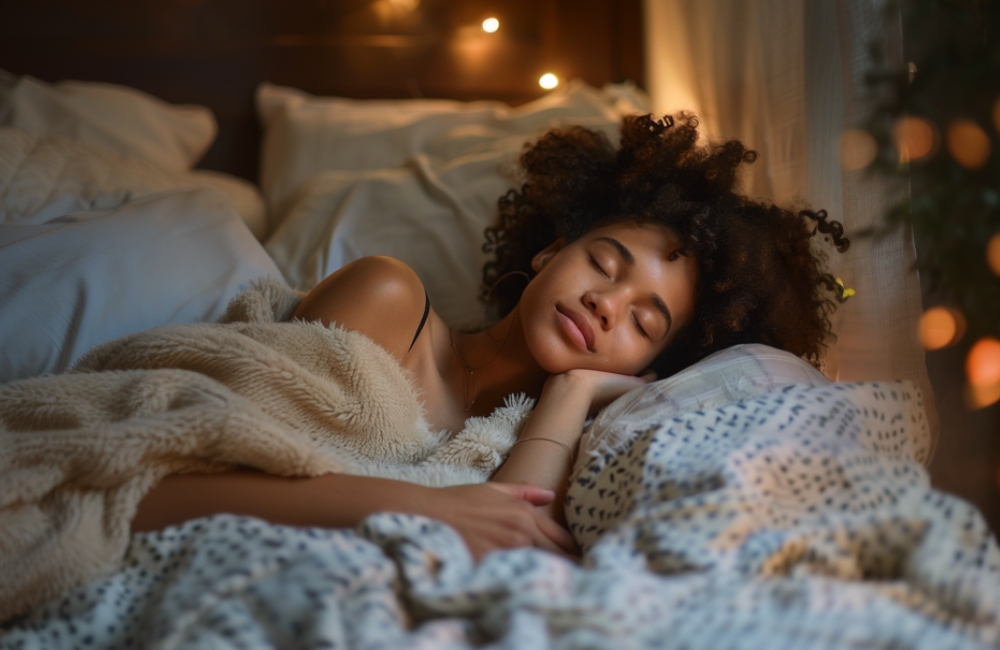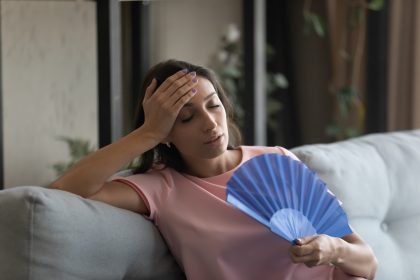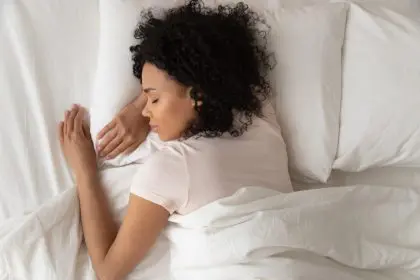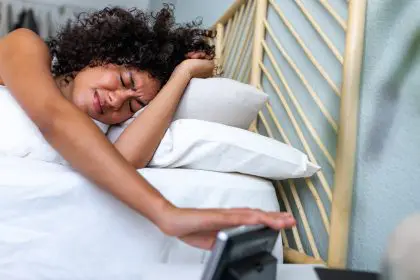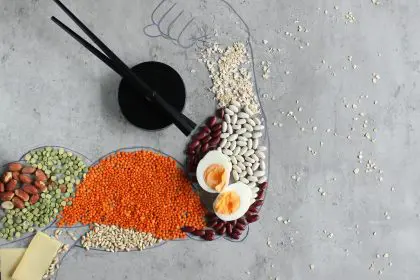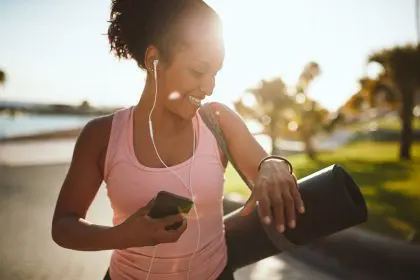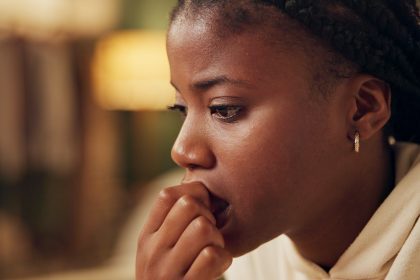Discover how to tap into the body’s natural healing points to enjoy deeper, more restful sleep without medication
The ancient practice transforming modern sleep
Tossing and turning through another sleepless night frustrates millions of people worldwide. The struggle for quality sleep affects physical health, mental clarity, and overall wellbeing. While many turn to medications with potential side effects, an ancient healing technique offers a natural, accessible alternative for sleep improvement.
Acupressure, a cornerstone practice of Traditional Chinese Medicine (TCM), has helped people achieve restful sleep for thousands of years. This holistic approach works by applying gentle pressure to specific points on the body, influencing the flow of energy or “qi” through pathways called meridians. The practice balances the body’s energy systems to promote relaxation and address sleep disruptions at their source.
Unlike its cousin acupuncture, acupressure requires no needles or special equipment, making it something anyone can practice at home. The technique can be incorporated into bedtime routines to calm the mind, release tension, and prepare the body for deep, restorative sleep. The simplicity of these techniques belies their effectiveness – many practitioners report falling asleep faster and experiencing fewer nighttime disturbances.
The 7 most effective sleep-inducing pressure points
- An Mian (Peaceful Sleep Point)
Located in the depression behind the ear where the neck muscles connect to the skull, this aptly named point directly targets insomnia and sleep difficulties. To stimulate An Mian, place your thumbs behind your ears and use gentle, circular motions for 1-2 minutes. This point helps quiet an overactive mind and promotes the transition from wakefulness to sleep.
- Yong Quan (Bubbling Spring)
Found on the sole of each foot in the depression when the foot is curled, this powerful point connects to the kidney meridian. According to TCM principles, stimulating Yong Quan grounds excess energy that might keep you mentally active at bedtime. Apply firm pressure with your thumb for 60-90 seconds on each foot before sleep to activate this grounding effect.
- Shen Men (Spirit Gate)
Located on the inner wrist crease in the small hollow on the little-finger side, Shen Men serves as a critical point for addressing anxiety and insomnia. This point calms the heart and mind, making it particularly effective for those whose sleep troubles stem from racing thoughts or emotional distress. Apply gentle pressure for one minute on each wrist as part of your bedtime ritual.
- Yin Tang (Hall of Impression)
Positioned between the eyebrows at what many cultures consider the “third eye” location, Yin Tang helps release mental tension and quiet anxious thoughts. This central point requires only light pressure applied in small, clockwise circles for 1-2 minutes. Many practitioners report an immediate sense of calm when working with this point before bedtime.
- San Yin Jiao (Three Yin Intersection)
Located four finger-widths above the inner ankle bone where three important meridians intersect, San Yin Jiao addresses hormonal imbalances that may contribute to sleep disturbances. This point proves particularly beneficial for women experiencing sleep issues related to hormonal fluctuations. Apply moderate pressure for 1-2 minutes on each leg.
- Bai Hui (Hundred Convergences)
Found at the crown of the head at the highest point where all meridians meet, Bai Hui helps calm the mind and clear thinking. Light fingertip pressure or gentle massage of this area for 60 seconds releases mental tension and promotes relaxation. This point works particularly well when combined with deep breathing exercises.
- Nei Guan (Inner Gate)
Positioned three finger-widths above the inner wrist crease between the two tendons, Nei Guan addresses anxiety, nausea, and insomnia. This widely-used point appears in many commercially available acupressure wristbands marketed for sleep and travel sickness. Apply firm pressure for 2-3 minutes on each wrist for maximum benefit.
The science behind acupressure’s sleep benefits
Modern research increasingly supports the effectiveness of these ancient techniques. Several clinical studies demonstrate measurable improvements in sleep quality among participants using acupressure. The mechanisms involve multiple body systems working together:
Acupressure triggers the release of endorphins, the body’s natural painkillers and mood elevators. These biochemicals create feelings of wellbeing and relaxation that facilitate easier sleep onset. The calming effect builds gradually with regular practice, addressing chronic sleep issues more effectively over time.
The practice activates the parasympathetic nervous system—the “rest and digest” response—which counteracts the stress-induced “fight or flight” state many experience at bedtime. This nervous system shift lowers heart rate, slows breathing, and relaxes muscles, creating ideal physiological conditions for sleep.
Acupressure helps regulate cortisol levels throughout the day. Proper cortisol rhythm—higher in morning, lower at night—supports healthy sleep-wake cycles. People with insomnia often show disrupted cortisol patterns that acupressure can help normalize over time.
Blood circulation improvements from acupressure deliver more oxygen and nutrients to tissues while removing metabolic waste products. This enhanced circulation creates physical comfort that supports quality sleep and reduces nighttime movement.
The mindfulness aspect of acupressure provides psychological benefits beyond the physical effects. The focused attention required to locate and stimulate pressure points creates a meditative state that breaks the cycle of rumination and worry that keeps many people awake.
Creating an effective sleep-inducing routine
For maximum benefit, incorporate these acupressure techniques into a comprehensive sleep routine:
Begin your acupressure practice 30-45 minutes before your intended bedtime, allowing the effects to build gradually. Start with points that address your specific sleep challenges—Shen Men for anxiety or San Yin Jiao for hormonal issues—before moving to generally calming points like Yin Tang.
Combine points in circuits for enhanced effects. For example, start with Yong Quan to ground excess energy, follow with Shen Men to calm the mind, and finish with An Mian to induce sleepiness. This strategic sequencing creates a progressive relaxation response throughout the body.
Use appropriate pressure techniques for each point. Some points respond best to firm, steady pressure while others benefit from gentle circular movements. The pressure should feel therapeutic—creating a sensation of release rather than pain. If you experience sharp pain, reduce pressure immediately.
Incorporate deep breathing while holding each point. Inhale slowly through your nose for a count of four, hold briefly, then exhale through your mouth for a count of six. This breathing pattern enhances the relaxation response triggered by the acupressure.
Create environmental conditions that support your practice. Dim lighting, comfortable room temperature, and elimination of electronic distractions maximize acupressure’s effectiveness. Consider using calming essential oils like lavender or chamomile to enhance the sensory experience.
Customizing acupressure for different sleep issues
Different sleep problems respond to specific acupressure approaches:
For difficulty falling asleep, focus on points that quiet mental activity. The sequence of Yin Tang, Shen Men, and An Mian addresses the racing thoughts that often delay sleep onset. Hold each point for 2-3 minutes while practicing slow breathing to signal your body that sleep time approaches.
For middle-of-night waking, prepare by stimulating points that promote deeper sleep cycles. The combination of Bai Hui and San Yin Jiao helps maintain sleep continuity. Additionally, keep a notepad by your bed to quickly record any thoughts that might wake you, allowing your mind to release them.
For early morning waking, address potential energy imbalances with Yong Quan and Nei Guan. These points help regulate the body’s energy distribution throughout the night, preventing the premature energy surges that cause early waking. Practice these points before bed and again if you wake early.
For stress-related sleep disruption, emphasize points that activate the parasympathetic nervous system. The combination of Yin Tang and Shen Men directly addresses the fight-or-flight response that accompanies stress. Add longer holding times of 3-5 minutes for each point to deepen their relaxing effects.
For travel-related sleep issues or jet lag, focus on points that help reset the body’s internal clock. Nei Guan and Bai Hui support circadian rhythm adjustment. Practice these points at your destination’s bedtime to help your body adapt to the new schedule more quickly.
Enhancing acupressure effectiveness for sleep
Several complementary practices maximize acupressure benefits:
Warm baths before acupressure sessions enhance their effectiveness. The temperature drop after bathing mimics the body’s natural pre-sleep cooling process, while the relaxed muscles respond more readily to acupressure stimulation.
Light stretching or gentle yoga poses between pressure point applications increases energy flow. Simple movements like neck rolls, shoulder shrugs, and gentle spinal twists release physical tension that might otherwise block the full benefits of acupressure.
Consistency matters more than duration. Brief daily practice yields better results than occasional longer sessions. Even five minutes of targeted acupressure each night creates cumulative benefits that improve sleep quality over time.
Tracking results helps identify the most effective techniques for your unique needs. Keep a simple sleep journal noting which points you stimulated and how you slept afterward. Patterns will emerge showing which approaches work best for your specific sleep challenges.
Patience allows the benefits to develop fully. While some people experience immediate improvements, the deepest benefits often emerge after 2-3 weeks of regular practice as the body’s energy systems recalibrate to support healthier sleep patterns.
When to seek professional guidance
While self-administered acupressure provides significant benefits for many sleep issues, certain situations warrant professional assistance:
If sleep problems persist despite consistent practice for 3-4 weeks, consider consulting an acupressure practitioner or acupuncturist who can provide more targeted treatment. Professionals often detect subtle energy imbalances that self-treatment might miss.
For sleep disturbances accompanied by other health concerns like chronic pain, respiratory issues, or significant mood changes, work with healthcare providers who can address the interconnected systems affecting your sleep.
Advanced techniques beyond the scope of self-care might prove beneficial for complex sleep disorders. Licensed practitioners can safely apply more intensive stimulation or work with points that require specialized training to locate properly.
Proper diagnosis ensures you address the root causes of sleep disruption. While acupressure offers powerful support for better sleep, underlying medical conditions sometimes require additional approaches for complete resolution.
Integrated care combining conventional and traditional approaches often yields the best results. Many sleep specialists now recognize the value of complementary techniques like acupressure alongside standard sleep hygiene recommendations.
Ancient wisdom meets modern sleep challenges in the practice of acupressure. By incorporating these seven powerful points into your nightly routine, you activate your body’s natural ability to achieve deep, restorative sleep. The gentle pressure of fingertips on these specific locations triggers cascading responses throughout your body’s systems, creating ideal conditions for the rest your body and mind require.

